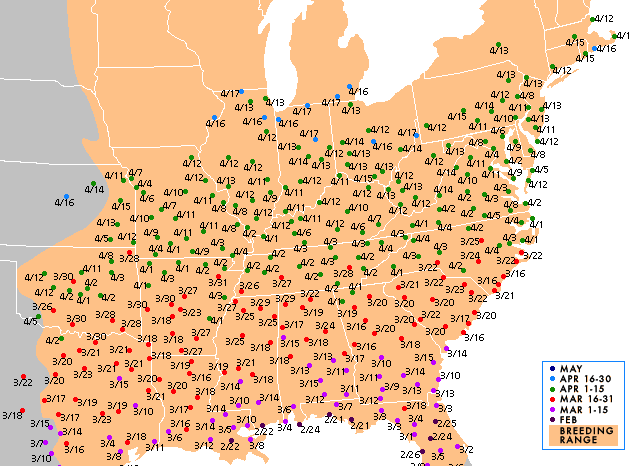-
Confessions from the Mealworm Feeder
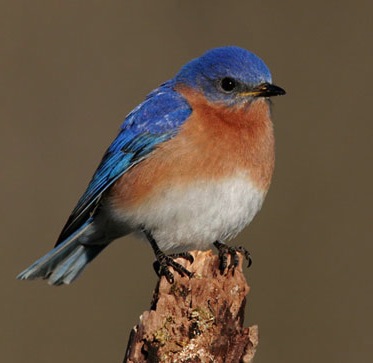 Addiction can be a terrible thing… and I fear that feeding worms has actually become one!
Addiction can be a terrible thing… and I fear that feeding worms has actually become one!So the worms are meant for this guy, his spouse and kids. Okay, the chickadees can have some, the titmice can too because they have nestlings to feed. Brown headed nuthatches stick around their box long after babies have fledged, they’re too much and may need a permanent address? For the first time phoebe finally has a family (that I’ve actually seen anyway) so of course they must take turns at the mealworm feeder – may you grow strong and thrive little phoebes!
Cardinals won’t touch worms… until they have babies to feed. The catbirds are simply out of hand, wish they’d just stick to the grape jelly! Have you ever seen 20,000 meal worms in a plastic shoe box heading for dormancy in the fridge? It’s become the norm as live worms cost less when buying in bulk. The worms aren’t bad, but the overnight shipping can kill ya!
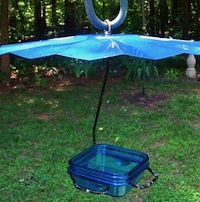
Using this open dish as one of the mealworm feeders is really just asking for it, but babies can’t figure out the enclosed bluebird feeders, or jail type ones with open grid cage. Carolina wrens certainly can, they’re always the first to figure out any new feeder containing mealies!
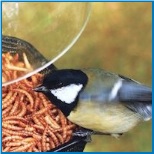 Screen feeders are nice and easy to use for humans and birds alike… but the worms crawl out! Anything with texture or tooth worms can grip allows cling and crawl action! No worries, anyone who drops to the ground meets their fate by a robin or thrasher just waiting below for the great escape!
Screen feeders are nice and easy to use for humans and birds alike… but the worms crawl out! Anything with texture or tooth worms can grip allows cling and crawl action! No worries, anyone who drops to the ground meets their fate by a robin or thrasher just waiting below for the great escape!So the addiction? The grower must think I eat worms myself, the quantity has now increased to 25,000 worms a pop… and this is every four weeks or so. And I wonder why I’m broke?
-
New Recycled Window Bird Feeders Rock!
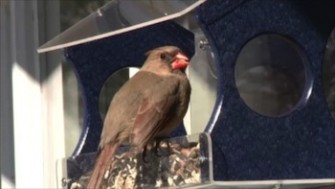
See birds up close and personal For Earth Day, we chose to feature new and green together. Not quite green in color, the vibrant primary hues make them that much more fun. So what’s so great about our new window bird feeders that’s worth mentioning?
They help keep plastics out of landfills. Back in the day, when our very first poly-lumber (an industry term for recycled plastic) feeders arrived, they had stickers on the roof saying 33 milk jugs were used to make that item. I think the sticker’s still on one of the walls somewhere? Although one feeder may not have much of an impact, when thousands are purchased by consumers… it most certainly makes a difference.
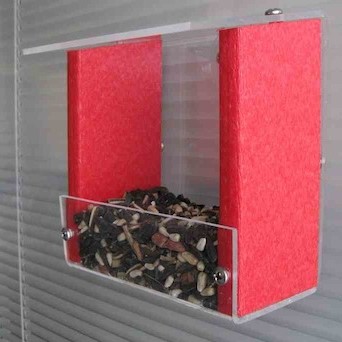
You can attract wild birds in the smallest of spaces with window feeders. The huge yard and landscaping isn’t required. On the balcony or deck, birds will visit your feeders. A shallow pan of fresh water is a good idea, and only helps further entice them.
Recycled plastic (glass and ceramic too) are actually healthier for birds! The non-porous surface thwarts bacteria and mold from settling into crevices. Don’t get us wrong… wood is good, but the slick, smooth surface is much easier to clean and maintain as it resists bacteria that’s harmful to birds.
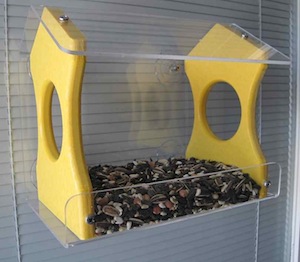
Will never rot, split, fade, peel, crack or warp! Poly-lumber items are guaranteed by most manufacturers. Color won’t fade as it’s solid all the way through, no top-coatings to chip away over time. The material is so durable, products are guaranteed to never peel, warp, fade, rot, split or crack – pretty impressive really!
Offer birds a variety of treats throughout the year and see who visits? The open dish design of these feeders will not limit you to offering birdseed. Suet and crumbles, shelled peanuts, fruit, jelly placed in a small cup (for orioles, cat birds and woodpeckers), and even mealworms will entice a wide variety of visitors. Offer specialty items in summer for migratory birds, and your basic seed and suet in winter for resident friends.
With spring in the air, we spotted a pair of Indigo Buntings yesterday, and Mr. & Mrs. Red-Breasted Grosbeak today!
So there’s a few good reasons why we think these window feeders are fab, plus they’re bird-tested and bird-approved. To welcome spring and help out Mother Earth, consider a new birdhouse or feeder for your feathered friends… the rewards are well worth the endless hours of entertainment they’ll provide.
Happy Earth Day and thanks for feeding the birds!
-
Eco Hummingbird Feeders for Earth Day Give-Away!
 There’s some awesome eco-friendly birdhouses and feeders out there, and with vibrant colors and fun designs-they’re made to last!
There’s some awesome eco-friendly birdhouses and feeders out there, and with vibrant colors and fun designs-they’re made to last!To help celebrate and honor Earth Day (which should really be everyday), our friends over at A Lucky Ladybug are giving away one of our recycled art glass hummingbird feeders. Since somebody has to win… it’s definitely worth a shot entering!
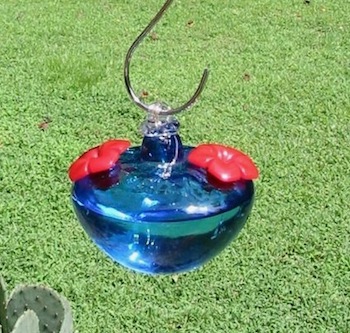 The contest starts on Earth Day, Tuesday 22nd.
The contest starts on Earth Day, Tuesday 22nd.Do you have yours out yet? It’s time, it’s time! Because once again spring is late, many of the flowers hummingbirds naturally feed from aren’t yet available, nor are the insects on which they feast. After such a long journey over the gulf, the tiny sprites are hungry and tired… they need food to re-fuel for the continued journey North.
Here’s the Ruby-Throated migration status according to sightings reported to hummingbirds.net… see? It’s time!
If you start seeing hummingbirds and then you don’t, they may already be nesting, regardless of weather. Mother Nature gives them some serious hard wiring. For example, that crazy fighting over feeders-even when there’s plenty for everybody. It’s not just territorial. Their survival instincts are so strong, that claiming a particular hummingbird feeder is actually a matter of life or death for them!
So get your feeders out of storage and first give them a good cleaning. Warm soapy water and a thorough rinse does the trick. Mix up a batch of nectar (consider making your own this year-it’s so simple). The solution can be made a bit stronger during migration periods as extra calories are helpful… especially when natural food sources are scarce. With smaller feeders, be sure to watch nectar levels so they don’t run dry, and do keep nectar fresh, changing it every few days. If hummingbirds come across spoiled nectar… they may not return to that feeder later.
Oh yeah, and don’t forget to head on over to A Lucky Ladybug on Earth Day (Tuesday, 4/22) and enter the Give-Away! This 16-ounce capacity glass hummingbird feeder, complete with red Parasol ant moat and nectar could be yours… for many seasons of use by tiny sprites!

